ChBE Department Update - Fall 2013
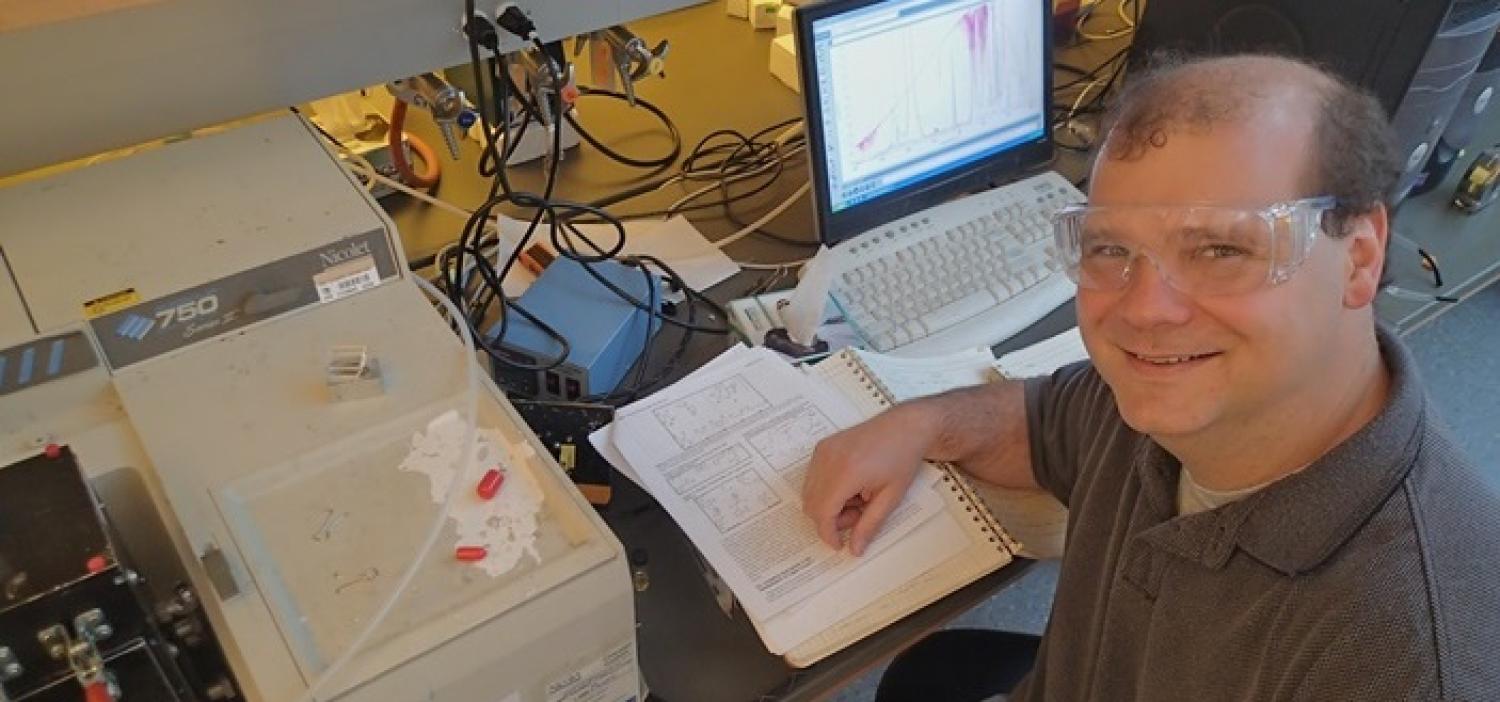
Bowman Heads Materials Science & Engineering Program
CU's newly established PhD degree program in Materials Science and Engineering (MSE) welcomed its first graduate students as well as the first new faculty hire into the program this fall thanks in large part to the efforts of MSE Director and ChBE Distinguished Professor Chris Bowman.
"We are really looking forward to establishing a world-class materials program at CU and working with new MSE faculty members and students," says Bowman. "This program provides an exciting opportunity for students to collaborate with researchers across those many fields and really approach MSE research in an exciting new paradigm."
More than 50 current CU faculty, including 10 in ChBE, have MSE-related research and have become faculty affiliates or fellows in the program. Several new faculty will be hired in the coming years as well.
In addition to building the MSE program, Bowman has been busy maintaining his own highly prolific research group. Fundamentally, his group is developing novel monomers and photopolymerization mechanisms with an aim of creating and characterizing innovative crosslinked polymeric materials. An image demonstrating the formation of a cross-linked network from one of Bowman's recent articles graced the April 2013 cover of the journal Advanced Materials. "We were happy to showcase one of our photopolymerization reactions and the unique mechanical properties of the resulting networks," he says.
Applications for these new materials are extensive. The group was recently awarded two 5-year NIH grants to build next generation dental composites, research which was also licensed to 3M. They have created new smart materials that respond with shape and property changes when exposed to a specific stimulus, and are looking to apply polymerization techniques to produce higher resolution patterning for micro- and nanolithography in semiconductor production. Other research areas include techniques using polymer chemistry to detect diseases more quickly than current approaches, and artificial nucleic acids that mimic DNA in several aspects but will be far cheaper.
>> Read the full article on Chris Bowman and the MSE Program
Weimer and Musgrave Develop New Water Splitting Technique for Hydrogen Production
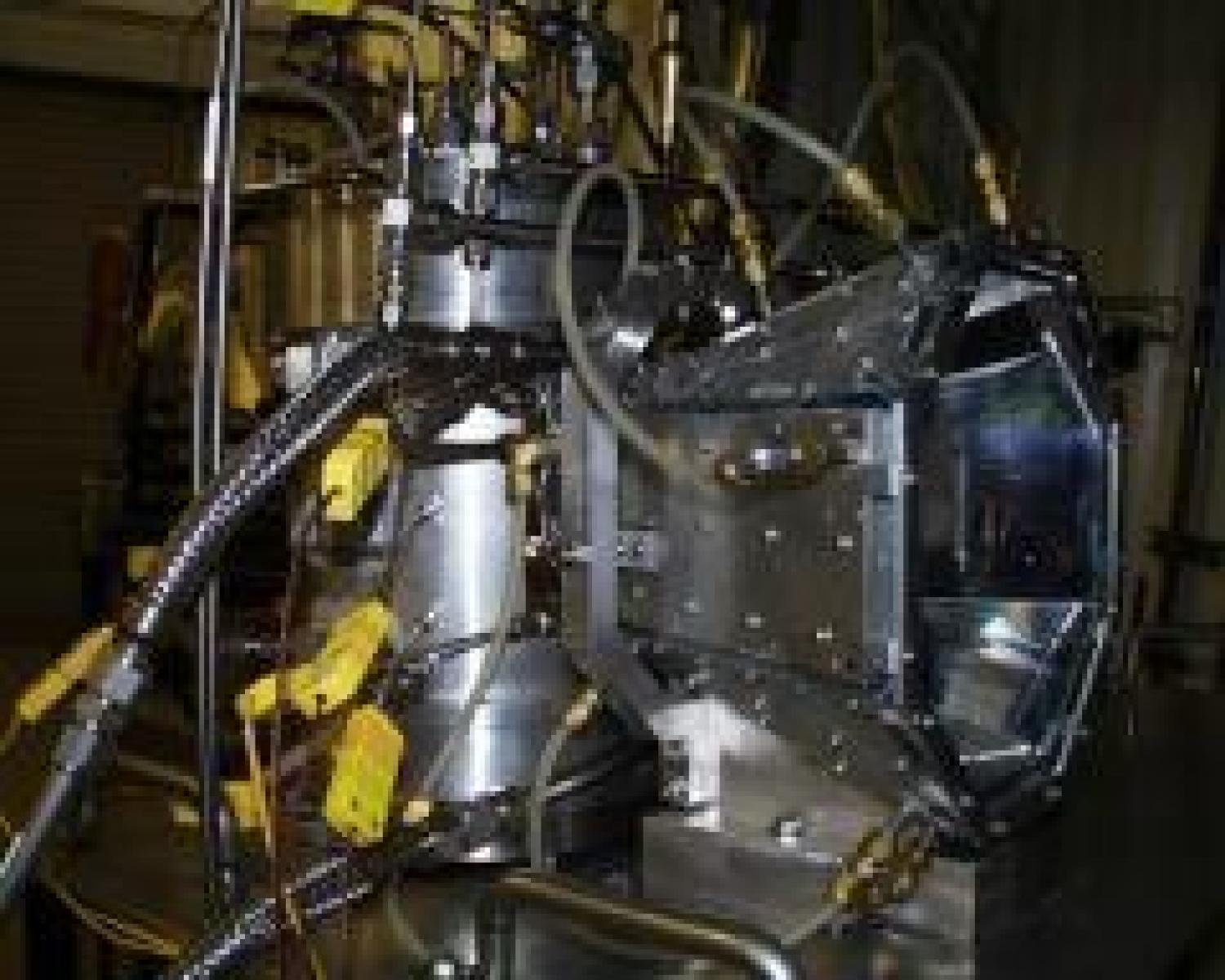
The team has devised a solar-thermal system in which sunlight could be concentrated by a vast array of mirrors onto a single point atop a central tower up to several hundred feet tall. The tower would gather heat generated by the mirror system to roughly 2,500 degrees Fahrenheit (1,350 Celsius), then deliver it into a reactor containing chemical compounds known as metal oxides.
"We have designed something here that is very different from other methods and frankly something that nobody thought was possible before," says Weimer. "Splitting water with sunlight is the Holy Grail of a sustainable hydrogen economy."
(pictured: a laboratory model of a multi-tube solar reactor that can be used to split water in order to produce clean hydrogen fuel)
>> Read the entire article on this water splitting technique
Former Faculty Stay Connected through ROMEOS
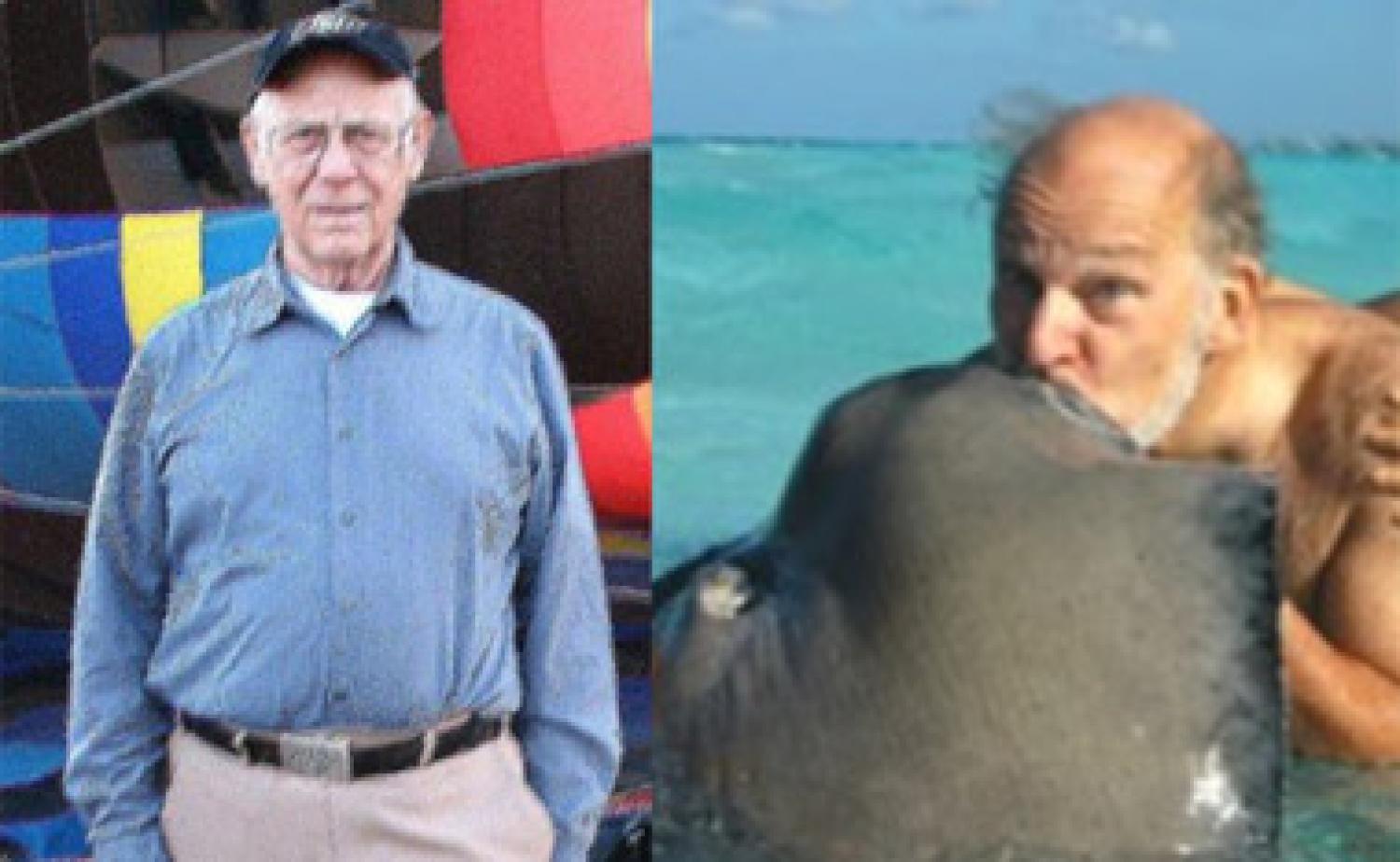
The Retired Old Men's Eating Out Society (ROMEOS) was first established in the mid-80's when Department of Chemical Engineering (ChE) instrument maker Willy Grothe, electrical engineer Norm Taylor, and Professor Elmer Lauer began going out to lunch together during the first week of each month, sometimes with other ChE staff. Lauer would regale the group with stories of his cross-country Model-T road trip in the early '30s and his work in the northwest timber industry.
As time passed, new members Professor Ron West (pictured left), race walker Professor Klaus Timmerhaus, and Professor Bill Krantz (pictured right) became mainstays. Both Lauer and Timmerhaus remained active with the group within months of their "moving on to the celestial chapter of the ROMEOS" at ages 97 and 86, respectively.
According to West, during luncheons "we talk about students whom we remember and past events such as evacuating the building because of an offensive release. We have also addressed some of the major problems facing humankind. I can say that we look back on our days in the department with great fondness, but really enjoy retirement."
>> Which current ChBE professors and Assistant Dean count themselves as ROMEOS?
Where Are They Now? Alum Kris Thunhorst (PhD ChemEngr '98)
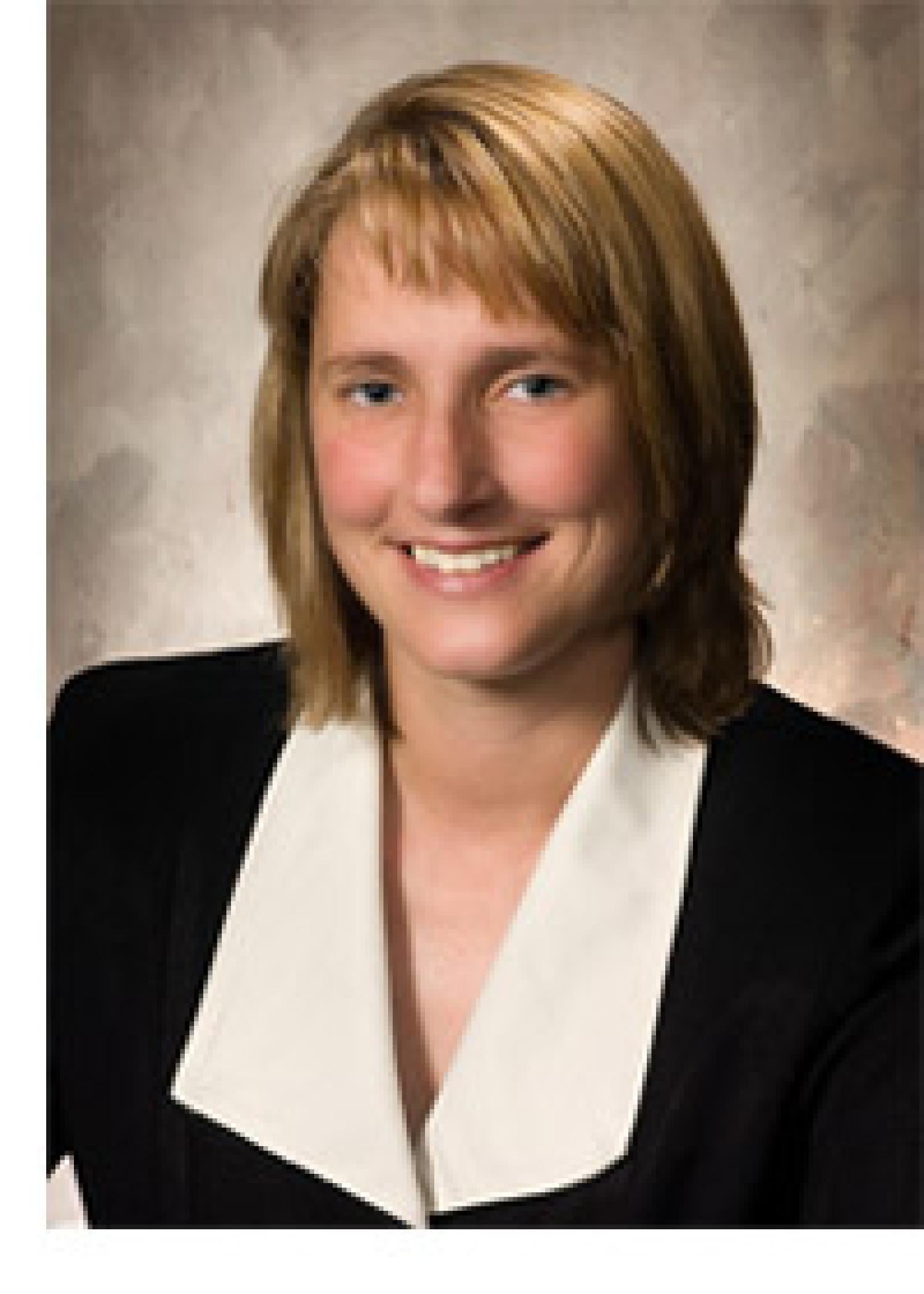
What have you been doing since leaving graduate school?
When I left graduate school, I immediately went to work at the 3M Company in the Corporate Research organization in the Radiation Processing Group. It was a wonderful transition from graduate school because I was introduced to a new and dynamic environment that provided opportunity to learn about unique industrial equipment, innovative approaches to problem-solving, and intricate manufacturing challenges. Around 2002, I began intensive training to become a Six Sigma Black Belt. As the Technical Program Manager for the design and certification of 3M's CNG pressure vessel products, I have had the opportunity to lead a very hard-working team through our first few product introductions and thereby opening business opportunity in a completely new area for 3M.
Personally, I have enjoyed doing a bit of educational outreach through 3M's Visiting Wizard program, which brings 3M scientists into schools. I also fulfilled a life-long dream by acquiring my first horse after graduate school. I currently train and show a half-Clydesdale mare in dressage. Once a week for the past six and a half years, we have teamed up to do therapeutic riding with a little boy who had a traumatic brain injury. Being a part of his verbal, mental and physical progress has brought me both amazement and joy.
Can you share a funny story from graduate school?
When you are in grad school, I think everyone believes that things will be so different when you graduate into the working world. The joke for all of us is that the same types of people and things happen in the "real world" as they did in grad school. I remember one lab-mate who seemed like he could never get anything done until the absolute last minute, and how he would be there all night to meet the deadline the next day. It seemed that somehow his inspiration only came in the wee hours of the morning. I also distinctly remember cleaning up a heavily-used piece of analytical equipment on the night-shift one evening (before I could use it), and making a tidy pile of the messy samples on the offending student's chair. That student is now a professor, and tells his own students that story.
>> Read the complete interview
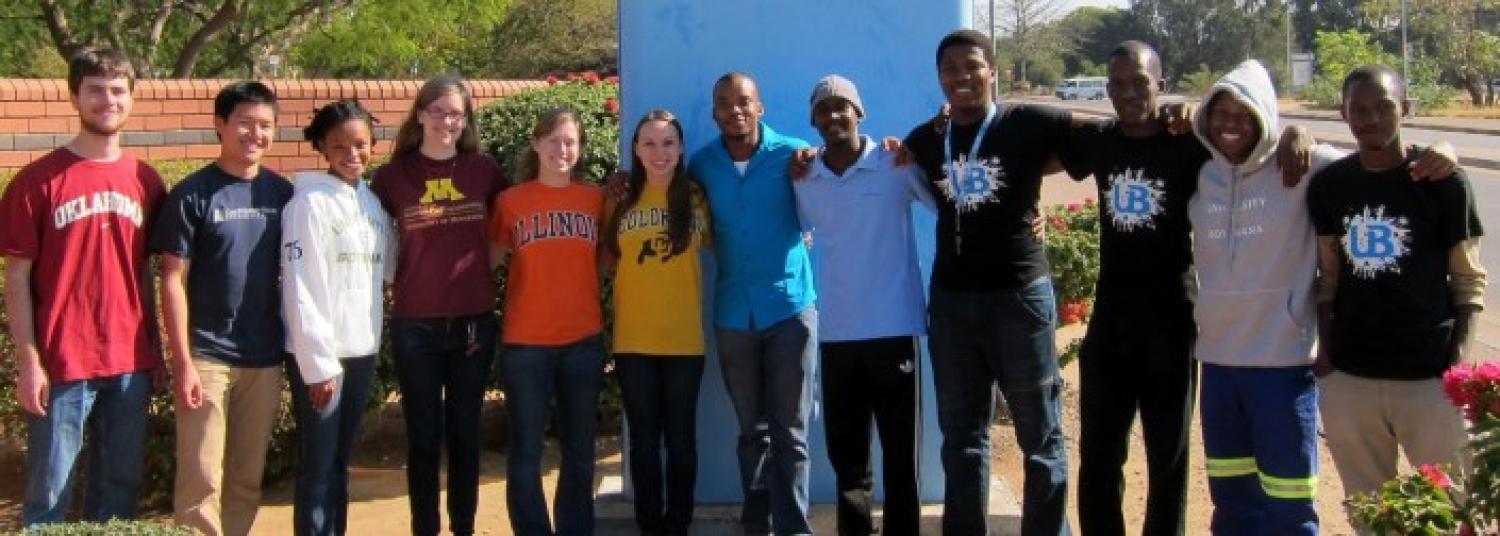
Undergrad Melissa Rabin Conducts Research in Botswana
After seeing a flier for a research experience for undergraduates (REU) involving sustainable energy for Sub-Saharan Africa, undergraduate student Melissa Rabin applied and was soon off to the University of Botswana (UB). She shared some of her experiences below.
What was your research project at UB?
The agave sisalana plant "Sisal" is very hardy. It has been used for hundreds of years to make rope and rugs. The project to which I contributed is investigating methods of chemically strengthening the sisal fibers for use in composite materials. While I was there, I manually extracted the fibers from the plant leaves, chemically treated them, and then examined their tensile strength.
Can you relate a particular adventure?
One of the other REU projects examined how to provide electricity to a rural village. The whole program drove 5 hours out to the village Tsetseng and we each got to see the school and conduct interviews with the locals. The kids at school were intrigued; we were probably the first white people they had seen, and they had fun playing with my hair. Although the official languages of Botswana are English and Setswana, many villagers only spoke a local dialect. Luckily my REU student partner was from a neighboring village and he knew the language, but it was funny to hear that even the other Botswana students were forced to use elementary words and gestures to communicate. It was extremely eye-opening to see how an entire village lives without refrigeration or lights. We also got to spend a few days on a safari in South Africa. It was incredible to be so close to the animals.
What have you gained from doing an REU abroad, and in particular in Botswana?
My REU was a fantastic way to gain engineering experience and to see how culture affects the scientific process. I was also amazed to learn how similar people are, despite the differences in our cultures. I would strongly recommend an REU abroad!
>> Read Melissa's thoughts on the differences between Boulder and Botswana
Welcome New Faculty
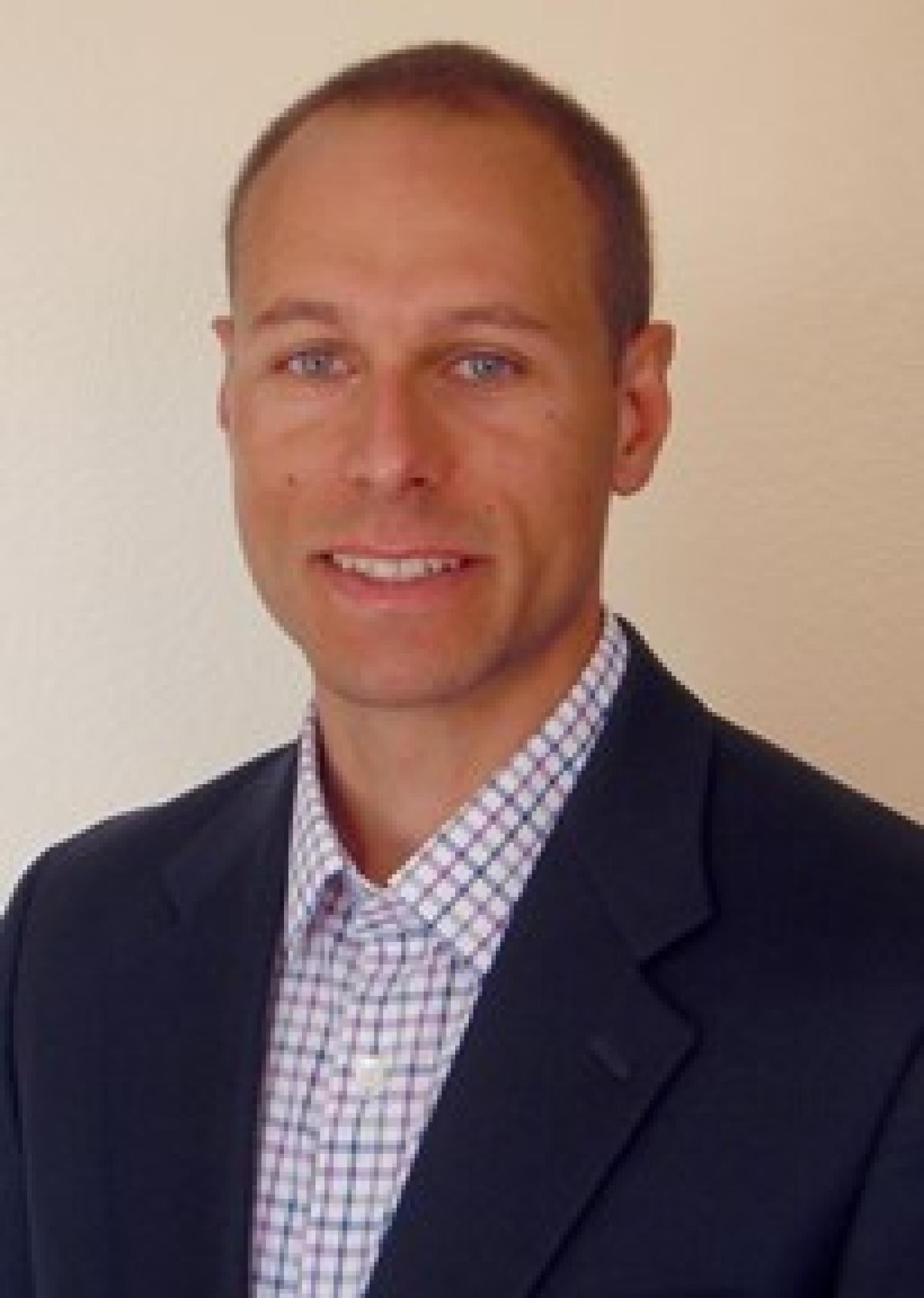
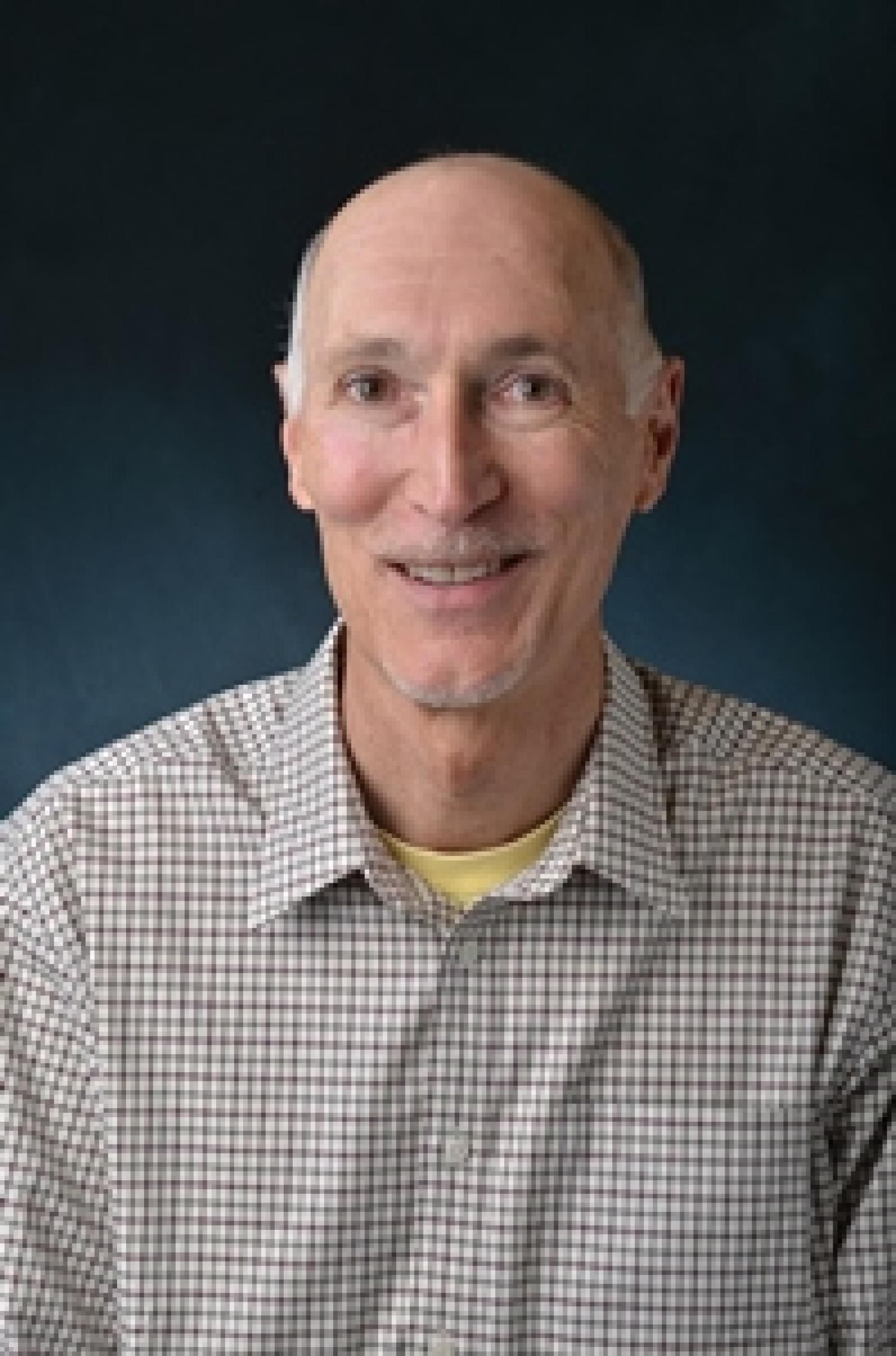
Class Notes
Let us know what you've been up to! Send us an alumni update using our online form.
Professor Emeritus William (Bill) Krantz (pictured with wife June and a friendly stingray) retired in 1999 after 32 years in ChBE, but his life has not slowed down in the intervening years. Since 2008 Bill Krantz has been a Visiting Professor at the Singapore Membrane Technology Center at Nanyang Technological University where he is involved in research on water treatment and desalination. He spends about three months each year in Singapore, which provides a great 'jumping-off-point' for travel to other countries in Asia.
Since Professor Emeritus Ron West retired 18 years ago, he has co-authored the 5th edition of the Peters and Timmerhaus design text and written several technology- assessment type articles with Frank Kreith (formerly ChE faculty and still on the ME faculty). Lately he is having fun contemplating the interpretation of entropy.
Neil L. Book (MS ChemEngr '74, PhD '76) was inducted into the Academy of Chemical Engineers in April. He is an associate professor emeritus at Missouri University of Science and Technology.
Peter Landi (ChemEngr '09) lives in the Las Vegas area. He works in Mountain Pass, California, at a rare earth mining and chemical processing facility. His job includes plant design, product and process development, process improvement, operations support, controls and process engineering, production reporting, national and international travel and various project engineering work.
Ibrahim Almadhi (ChemEngr '12) is working in Al-Khobar, Saudi Arabia as a production engineer at SADARA Chemical Company – a joint venture between Saudi Aramco and Dow Chemical. He reports walking the plant with the CU logo proudly stuck to his hard hat.
Zach Nager (ChemEngr '13) was hired as a laboratory technician by Boulder-based Siva Therapeutics Inc.
Letter from Chair Dan Schwartz
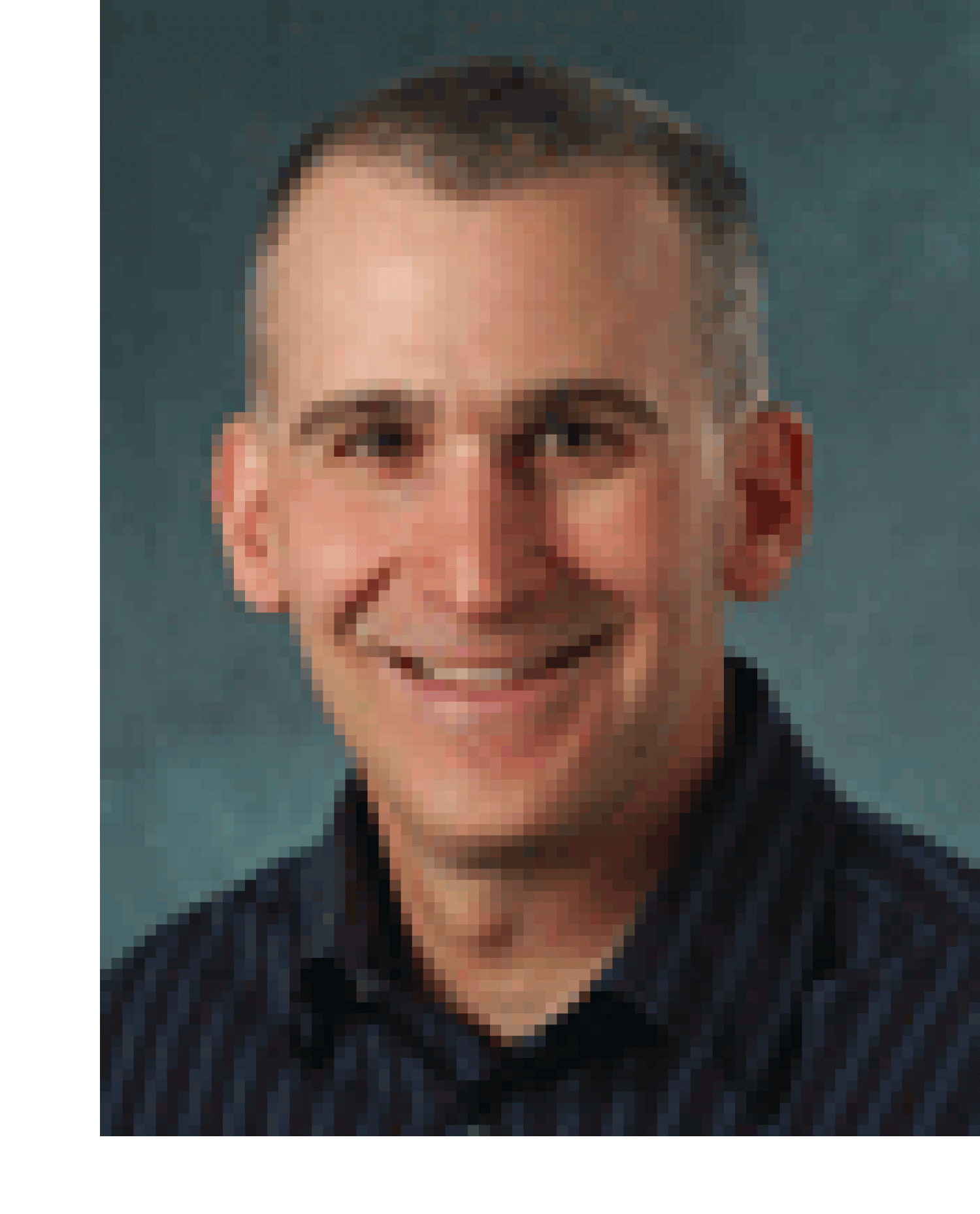
In my letter last spring I introduced our "pillars of excellence" philosophy towards research in the department. The first of three research symposia, focusing on the energy pillar, was held last March. We had an excellent turnout and great feedback from this event, and we are following up with a second symposium on Thursday, Oct. 3 focusing on the topic of bioengineering. The event will introduce alumni and friends of the department to our second research pillar in an informal and accessible setting. Bioengineering-related research pursued in the department is diverse and exciting. Faculty will describe research to create improved pharmaceuticals and vaccines, regenerate diseased organs and tissues, develop imaging methods to identify tumors (and other diseases) within the human body, and exploit biomolecules like enzymes for new and exciting technologies. A networking event for professionals, graduate students, and both CHEN and CBEN undergraduate students will follow the symposium.
I'd also like to draw your attention to the 2013 Student Annual Research Symposium (StARS), which will be held on Monday, Sept. 30. This is a student-organized event, which showcases some of the best research being performed across the department from the perspective of the graduate students themselves. This is always a fantastic day, and we greatly appreciate the many alumni and representatives from industry and national labs that make it possible through their support and presence.
Dan Schwartz
Department Chair
Upcoming Events
Sept. 18, 7:30-9 a.m. at Merrick - Alumni Lecture Series with Professor Dave Clough on "Building Programs and Friendships in Iraqi Kurdistan."
Sept. 24 - CU Engineering Multi-City Happy Hour.
Sept. 30 in JSCBB - 2013 Student Annual Research Symposium (StARS).
Oct. 3, 5:30-7:30 p.m. in JSCBB Lobby – Fall 2013 ChBE Research Symposium and Networking Event open to alumni, professionals, graduate researchers, and CHEN and CBEN undergraduates. RSVP: wendy.young@colorado.edu.
Oct. 24-27 - Back to Boulder Homecoming Weekend, including tours of ChBE's Bowman and Anseth labs.
Oct. 29, 1 pm in JSCBB A115 - Patten Distinguished Seminar: Professor Jacob Israelachvili (UC-Santa Barbara) on "Interactions of Soft Particles (Vesicles, etc.) in Complex Fluid Systems."
Nov. 4 - ChBE Reception at the AIChE Annual Meeting in San Francisco (date/time to be posted).
More ChBE events >
More alumni events >
Faculty, Staff & Student Awards
Distinguished Professor Kristi Anseth received the 2013 AIChE James E. Bailey Award for Outstanding Contributions to the Field of Biological Engineering.
In addition to receiving the 2013 Computational Molecular Science and Engineering Forum Young Investigator Award, Patten Assistant Professor Arthi Jayaraman was honored as a 2014 American Chemical Society Polymeric Materials: Science and Engineering Young Investigator. Jayaraman's work was also featured in Soft Matter's 2013 Emerging Investigators Issue and in the 2013 Journal of Polymer Science B: Polymer Physics Young Investigators Issue.
Associate Professor Will Medlin and Patten Assistant Professor Arthi Jayaraman were both recipients of 2013 Provost Faculty Achievement Awards.
Professor Rich Noble received the 2013 National Society of Professional Engineers Engineering Education Excellence Award as well as the 2013 Dean's Faculty Performance Award for Research.
Dr. Jia Chew was awarded the 2013 AIChE Best Ph.D. Thesis in Particle Technology for her experimental research on the impact of polydispersity on multiphase flows.
Former Anseth graduate student Dr. Mark W. Tibbitt received the 2012 Outstanding Thesis Award by the Max Bergmann Center for Biomaterials in Dresden.
In the Community
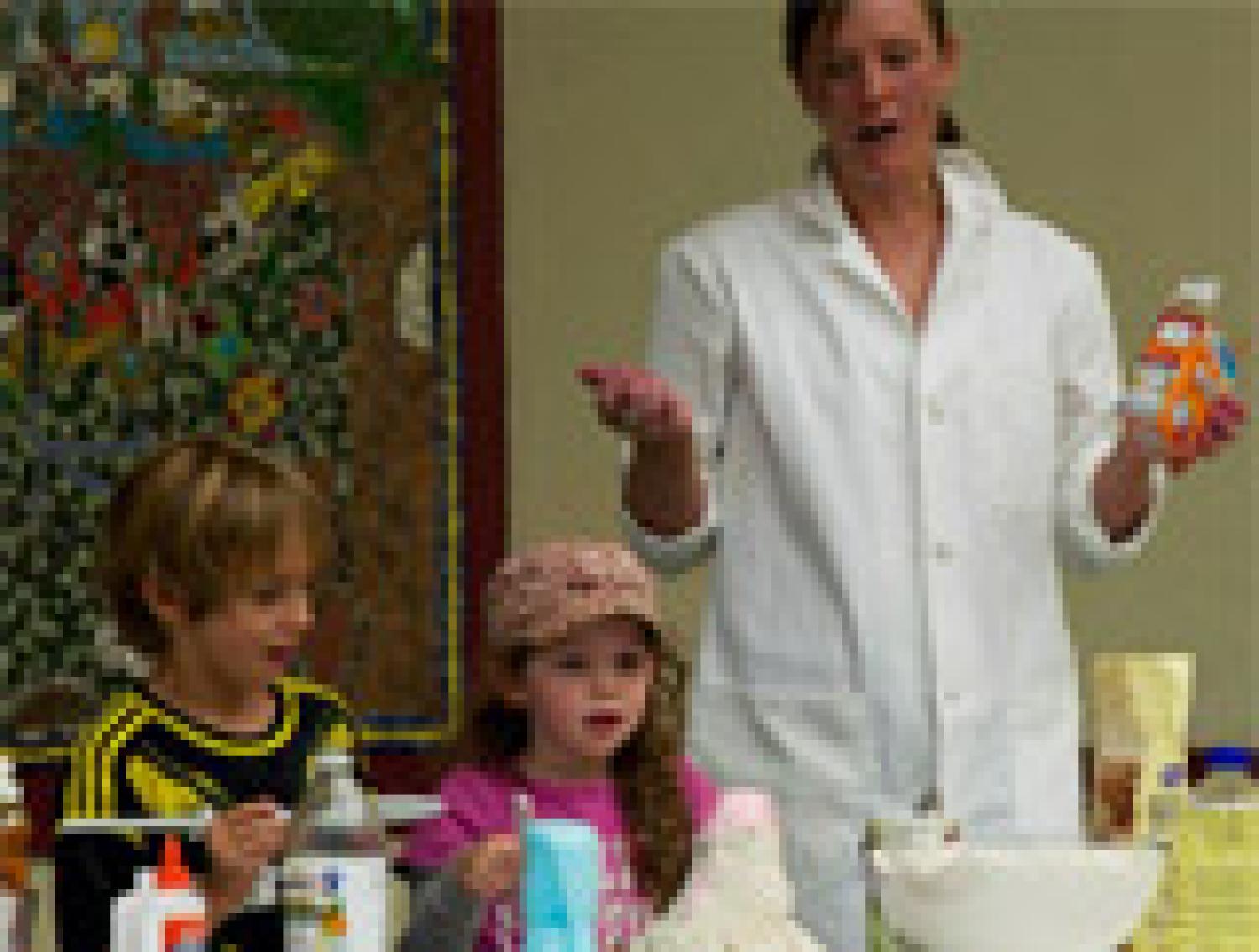
This summer ChBE department members Janet DeGrazia, Hans Funke, Justine Roberts (pictured), and Kyle Kyburz volunteered with the Pinhead Institute (a Smithsonian Affiliate), based in Telluride, Colorado. The Pinhead Institute "Punk Science" demonstrations promote science education locally in rural Colorado. ChBE presenters taught up-and-coming scientists about atomic reactions, chemistry, and physics through kid-friendly experiments such as sugar decomposition, balloon explosions, baking soda/vinegar and Mentos/Coke volcanos, slime/gunk polymer creation, and much more!

